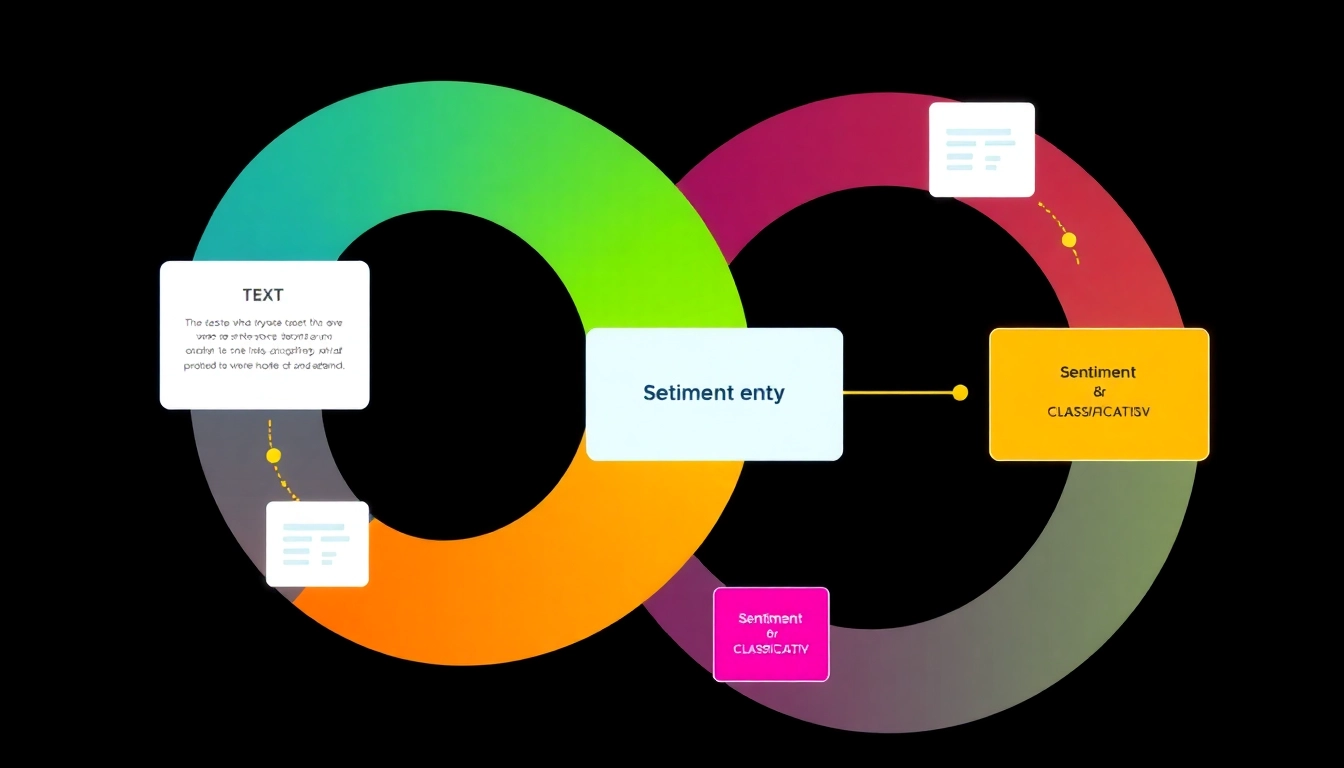Understanding AI Sentiment Analysis
What is Sentiment Analysis?
Sentiment analysis, also known as opinion mining, is a technology that employs natural language processing (NLP), machine learning, and text analytics to identify and extract subjective information from text. This process determines the emotional tone behind words, thereby classifying sentiments as positive, negative, or neutral. In an era where businesses are inundated with digital communications, such as customer feedback, social media posts, and product reviews, understanding the sentiment behind these texts can provide invaluable insights. Overall, sentiment analysis helps organizations better grasp public opinion and consumer feelings, ultimately driving decision-making and strategy. For further exploration on AI sentiment analysis, click AI sentiment analysis.
The Importance of AI in Sentiment Analysis
AI plays a crucial role in enhancing the efficacy and accuracy of sentiment analysis. Traditional methods, which relied heavily on manual processes, could not keep pace with the vast amounts of data generated by social media and digital communications. By leveraging AI and machine learning algorithms, businesses can automate sentiment analysis effectively.
For instance, AI algorithms can be trained on vast datasets to recognize patterns in language and tone, which allows them to understand nuances that might elude human analysts, such as sarcasm or contextual meanings. As AI technologies continue to evolve, they offer improved capabilities in analyzing sentiments with higher precision and speed, enabling businesses to respond to customer sentiments in real time.
Types of Sentiment Analysis Techniques
Several approaches are implemented in AI sentiment analysis, each providing varying degrees of complexity and insight. The most prominent methods include:
- Rule-Based Sentiment Analysis: This approach uses a set of predefined rules to identify sentiment. It relies on sentiment-laden words or phrases and applies linguistic heuristics to judge the overall sentiment.
- Machine Learning-Based Sentiment Analysis: By training models on labeled datasets, machine learning techniques, such as support vector machines or neural networks, predict sentiment with high accuracy. These models learn to classify texts based on features extracted from words.
- Deep Learning Sentiment Analysis: Utilizing complex neural network architectures, deep learning can capture intricate patterns and relationships in datasets, leading to superior sentiment classification. This method is often used in conjunction with large datasets and requires more computational power.
Key Applications of AI Sentiment Analysis
Customer Feedback and Reviews
AI sentiment analysis tools are extensively used to analyze customer feedback and reviews. By interpreting customer sentiments embedded in these reviews, businesses can get a clear picture of their product or service performance. For example, an online retail company might analyze customer reviews to discern overall product satisfaction and identify specific issues customers face.
Moreover, examining sentiment trends over time allows businesses to gauge the impact of changes made to products or services. If a new update positively affects customer sentiment, companies can use that information in marketing campaigns to build credibility and attract new customers.
Social Media Monitoring
In the digital age, social media platforms serve as a breeding ground for customer opinions and sentiments. AI sentiment analysis can be used to monitor and measure public sentiments surrounding brands, products, and services on platforms like Twitter, Facebook, and Instagram. By analyzing social media mentions, companies can proactively manage their brand reputation and engage with unhappy customers before their concerns escalate.
For instance, a brand might employ sentiment analysis to track conversations about a recent marketing campaign. By understanding whether the public sentiment is positive, negative, or neutral, companies can adapt their strategies to improve engagement and brand perception.
Market Research Insights
AI sentiment analysis provides businesses with profound insights into market trends and consumer behavior. Analyzing sentiments from various sources can reveal emerging trends and customer preferences, informing product development and marketing strategies. For instance, a tech company launching a new gadget can analyze social media sentiments to assess public anticipation before the product launch.
Furthermore, sentiment analysis can uncover insights about competitors, allowing businesses to adjust their strategies in a competitive landscape. By understanding consumer sentiments towards rival products, companies can highlight their unique selling propositions to capture market share.
Tools and Technologies for AI Sentiment Analysis
Popular AI Sentiment Analysis Tools Available
The market offers various AI sentiment analysis tools, each equipped with unique features tailored to different business needs, including:
- IBM Watson: A robust AI platform that utilizes NLP to deliver sentiment analysis capabilities suitable for enterprises.
- Google Cloud Natural Language API: A cloud-based AI service that enables developers to integrate sentiment analysis into applications seamlessly.
- Brand24: Ideal for brand monitoring, this tool analyzes public sentiment about a brand in real-time across the web.
Open-Source Libraries for Implementations
In addition to commercial tools, several open-source libraries are available for those seeking to implement AI sentiment analysis independently. Popular choices include:
- NLTK: The Natural Language Toolkit (NLTK) provides a suite of libraries and tools for language processing in Python. It includes functionality for sentiment analysis all built-in.
- TextBlob: This library simplifies processing textual data and has built-in sentiment analysis features, making it great for beginners.
- Transformers (Hugging Face): This library supports advanced NLP models, including those for sentiment analysis, leveraging the power of pre-trained transformer models.
Choosing the Right Tool for Your Needs
When selecting a sentiment analysis tool, businesses must consider various factors, including the scale of data, budget constraints, and the complexity of required analysis. Companies often benefit from tools offering API functionality for easy integration into existing systems while also providing comprehensive user support. Making the right choice can significantly impact the quality and accuracy of sentiment analysis.
Best Practices for Implementing AI Sentiment Analysis
Data Preparation and Cleaning
The effectiveness of AI sentiment analysis largely depends on the quality of the input data. Data preparation involves cleaning and structuring data to remove noise and irrelevant information. Techniques such as tokenization, stemming, and removing stop words are critical in preparing textual data for analysis. Moreover, ensuring that the dataset is diverse and appropriately labeled helps train models that can generalize across new data accurately.
Model Training and Optimization
Once the data is prepared, the next step is to train sentiment analysis models. Proper model selection is vital, depending on whether a rule-based, machine learning, or deep learning approach is being utilized. Hyperparameter tuning and cross-validation are essential components of the training phase, ensuring that the chosen model accurately captures sentiment patterns. Continuously iterating on model training can lead to significant improvements in performance.
Evaluation Metrics for Sentiment Analysis
To gauge the performance of sentiment analysis models, various evaluation metrics can be employed, including accuracy, precision, recall, and F1 score. A confusion matrix can also aid in visualizing performance by displaying the true positives, false positives, true negatives, and false negatives. Regular performance assessments are essential to identify areas needing improvement, ensuring that the model remains effective over time.
The Future of AI Sentiment Analysis
Emerging Trends in Sentiment Analysis
The field of AI sentiment analysis is constantly evolving, driven by advancements in machine learning and NLP. Key emerging trends include:
- Real-Time Analysis: As businesses demand faster insights, real-time sentiment analysis capabilities will become increasingly essential, enabling timely responses to public sentiment fluctuations.
- Multimodal Sentiment Analysis: Expanding beyond textual data, multimodal sentiment analysis will incorporate gestures, facial expressions, and voice tone, enriching sentiment comprehension.
- Integration with Other AI Technologies: Combining AI sentiment analysis with other technologies such as chatbots and virtual assistants will create more intuitive customer interactions.
Impact of Generative AI on Emotion Detection
Generative AI stands to transform sentiment analysis by enhancing its accuracy and ability to comprehend context. With models capable of generating human-like text, the processing and understanding of sentiments within conversational contexts will improve. Companies can leverage this to not only analyze sentiments but also predict future trends based on evolving consumer behavior and sentiment trends.
Challenges and Opportunities for Businesses
While AI sentiment analysis presents exciting opportunities, several challenges remain. Issues such as data privacy, the complexity of understanding nuanced language, and the need for substantial training data can hinder progress. Companies must navigate these challenges while strategically leveraging AI insights to improve their products and customer engagements. Addressing these hurdles head-on can lead to significant competitive advantages, positioning organizations at the forefront of customer-centric innovation.



